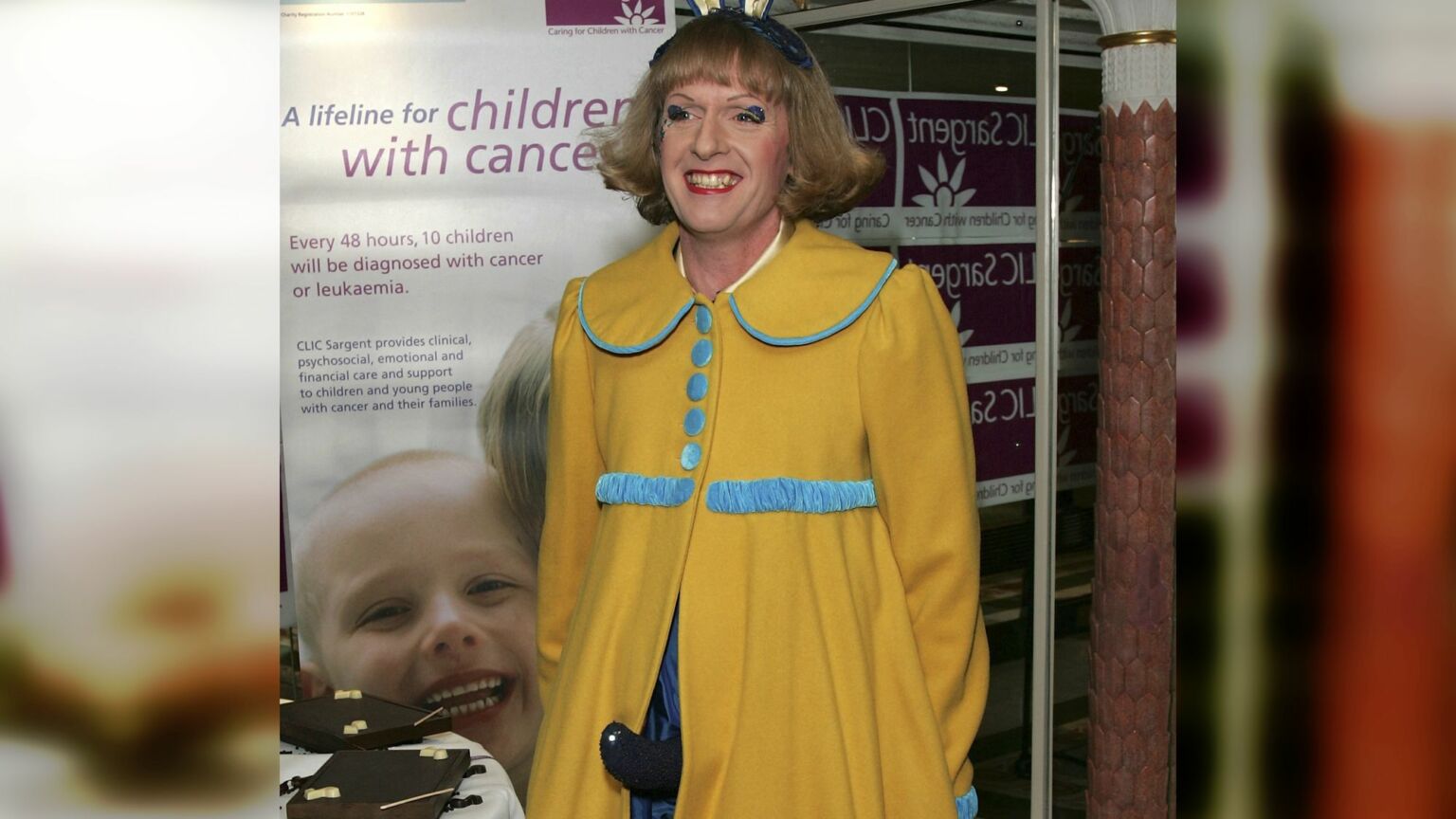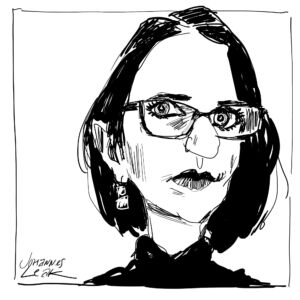Grayson Perry: when crossdressing crosses the line
How did the cross-dressing artist get away with flashing a prosthetic penis at a children’s charity fundraiser?

An image of Grayson Perry resurfaced on social media last week. The Turner Prize-winning artist had been snapped at a 2007 charity-fundraising ball wearing a characteristically flamboyant outfit, featuring a girlish smock and bunny ears. Most notably, a blue prosthetic penis can be seen protruding from his pantaloons.
Of course, Perry is a well-known crossdresser and provocateur. His sartorial selection wouldn’t normally be worth commenting on, but for the fact that the charity event was for children with cancer. The photo itself shows Perry, his prosthetic penis on full display, posing in front of a CLIC Sargent banner, which was adorned with the super-sized smiling face of a child. Even more striking is that this seemed to go completely unremarked upon until last week.
Perhaps, in his defence, Perry accepted the invitation and chose his clothes without checking what the event was for. But it is far from the only public event where Perry has worn what amounts to fetish gear, although always with a colourful and creative take.
Perry has been upfront about his motivations for this. Writing in Sketchbooks in 2016, he revealed that much of his art, designs and style are driven by ‘an erotic impulse to humiliate myself’. ‘My ideas come from historical costume, folk culture, children’s clothes and the BDSM world’, he wrote. Many of the images in Sketchbooks make references to pornography and what might be euphemistically called the ‘dark side’ of male sexuality. Similarly, in an interview with the Guardian in 2015, he made clear that ‘humiliation’ that often comes with crossdressing ‘is a massive turn-on’.
Arguably, Perry is as famous for his crossdressing as he is for his art. When he was knighted in 2023, he attended the ceremony dressed as his feminine alter-ego, Claire. As an artist, he produces accessible and insightful work that comments on everything from the vanity of British class divides to his personal reflections on sexuality. Whether he chooses to make an exhibition of himself or not, his art certainly deserves to be seen and taken seriously.
To give Perry his due, unlike other public transvestites of his age, like comedian and wannabe MP Eddie Izzard, Perry has never claimed to be anything other than a bloke in a frock. And in the art world there ought to be room for the unconventional – for those who show us where the edges of acceptability are.
Nevertheless, there is something undeniably creepy about an adult man wearing fetish wear at a children’s charity event. So why did it escape the media’s notice? Were they too blinded by his national-treasure status to see his fake crown jewels on display? Or did they simply not realise that he might have been casting those around him as players in a sexual fantasy?
One blogger, who uses the moniker Sarah Stuart, recently attended a show by Perry at London’s Theatre Royal on the importance of identity. His performance included predictable digs about the culture war and the supposed bigotry of those who oppose Drag Queen Story Hour, alongside feel-good platitudes about the importance of self-expression. Stuart concluded that, ultimately, Perry ‘didn’t want people to criticise the aberrant behaviour of men like himself’.
The fault is not Perry’s alone. Nowadays, the great and the good are desperate to heap praise on men in dresses, from non-entity models like trans activist Munroe Bergdorf, now a UN Women ‘UK Champion’, to the ‘nonbinary’ crossdressing banker Philip (aka ‘Pips’) Bunce, who was named as one of the Financial Times’s Top 100 Women in Business.
It used to be the case that men who displayed their fetishes in public were shunned. They were deemed a bit grubby and naff. Yet just as the seedy swingers of the 1970s have been rebranded as ‘polyamorous’, transvestites are today considered brave and pioneering. Some are even dubbed ‘transwomen’. Fetishes like crossdressing are treated as expressions of a man’s ‘true’ inner identity. And what was once kept behind the bedroom door is now foisted on the public.
These men are free to do as they please in their own time. But the rest of us really shouldn’t be expected to play along with it.
Jo Bartosch is a journalist campaigning for the rights of women and girls.
Picture by: Getty.
To enquire about republishing spiked’s content, a right to reply or to request a correction, please contact the managing editor, Viv Regan.










Comments
Want to join the conversation?
Only spiked supporters and patrons, who donate regularly to us, can comment on our articles.